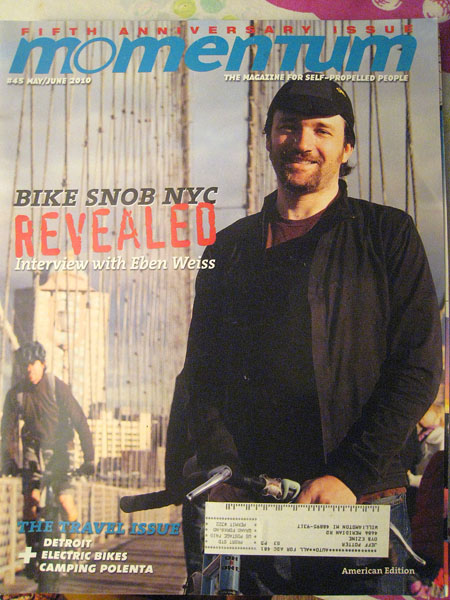Biking the Oregon Trail
by A. D. Anderson, who is a musician, traveler, and staff of the French Broad Food Coop, living in Swannanoa, NC.
[Reprint from defunct Kokopelli Notes.]
Like an overheated radiator, I was about to blow my top. This was ridiculous, pedaling as hard as I could and going six miles an hour downhill! In disgust and despair I plopped my bike down in the dirt and tried to figure out a way to capture my opponent, at least on film. But wind its an elusive subject when there’s nothing in sight for its power to be measured against. I finally removed my soaking tee shirt, which snapped immediately into a horizontal flag and nearly blew out of my hand. Yes! I clicked off a couple of satisfying shots then reluctantly climbed back on my bike. That day it took seven hours to cover 29 miles, all of it downhill.
It should have been one of the easiest days of my crosscountry trip. Following the route of the historic Oregon Trail, I’d climbed gradually and steadily since leaving Independence, Missouri, six weeks and a thousand miles earlier. Across Kansas. Nebraska and Wyoming the route heads upstream beside waters flowing toward the Mississippi. Rivers become streams and then creeks as I pedaled up to the crest of the Rocky Mountain Continental Divide, at South Pass, Wyoming. It was an emotional day for me when I finally stood atop that pass. as it must have been for the half-million Pioneers who passed this way between 1843 and 1866. For them. this was the very boundary of the Oregon Territory. As one put it, “We are taking leave forever of the waters that flow toward our homes,” trading them for those flowing westward, into their uncertain future. And for me, it also meant the first downhill run in a month and a half, something I’d looked forward to for a long time!
I first caught the inspiration for this trip while driving across Nebraska several years ago. A curious little dotted line in the Rand McNally crossed five states and turned out to be the Oregon Trail. Was there really a trail there, I wondered, or was this simply a cartographer’s rendering of a historical event? On May 20, 1993, exactly 150 years after the first group of wagons set out from Missouri, I set out from Swannanoa, North Carolina on a 1986 Fisher mountain bike with 70 pounds of gear….to find out.
Just getting to the trailhead in Independence was challenging enough. My route followed the Blue Ridge Parkway to the Smoky Mountain National Park, over Cumberland Gap, across the Cumberland Plateau, through tornadoes in Kentucky, over the scariest I bridge of my life at the Ohio River, through mothballsized hail in Illinois, across the flooding Mississippi, and finally into Missouri. The storms that battered the Midwest that summer battered my body daily, but it was the hills of Missouri (over 300 on one particularly exhausting day) that almost broke my spirit.
Once in Independence, however, my passion for the trip returned, especially as I gathered historical information about the trail. The displays at the National Frontier Trails Center were tilled with the human drama of the Oregon Trail, and served as an emotional introduction to a group of people I’d soon come to know and strongly identify with — the “emigrants,” or pioneers, as we now call them. In what has been called(l the largest peacetime migration in history, a halfmillion Easterners traded in their farms, businesses and futures for tiny wagons, a team of oxen to pull them, a few questionable maps, and the promise of a different (and hopefully better) future in the West.
Motivation to undergo a 2,000 mile journey across a wild and harsh land has been pondered by historians for decades. Some people believed the propaganda that a paradise lay ahead; others were escaping debt, the law, a lite of poverty, or the artificialities of civilization. Whatever caused people to leave, the tragedies and hardships they would endure along the way were largely unexpected. Roughly 30,000 would die, mostly from cholera (that is one person for each 1000 feet of the trail). Besides diseases there were dust and backbreaking work, swollen rivers. endless horizons, and aborigines who were protecting their homeland. (This territory had been “forever” protected under treaties which were later broken as settlers became interested in it.) But driven by the twin ideals of expansionism and freedom, their movement would spawn the concept of “Manifest Destiny.” and change the history of the United States forever.
I also found out that significant sections of the original trail remain intact. While a lot is under asphalt or agriculture, there are some places, especially where rugged terrain forced the wagons into a single file, that the ruts of a million ironclad wheels are as deep and obvious as if they were made yesterday. In some rocky spots the rust from scraped wagon tongues can be found, and there’s a place in eastern Wyoming where a narrow passage through sandstone left ruts that are four feet deep!
As I left Independence, the daily storms, hills and traffic of the east gave way to flowercovered prairies, incredible sunsets and nights full of stars. Eagles, hawks and owls became my constant companions as human interactions came fewer and farther between. As I climbed into the high plains I began to realize that, like the air itself, my senses had become clearer, and like the sky, expanded. Badger holes replaced potholes as I left the pavement to follow the trail more closely across barren landscapes. And as I came across lonely emigrant graves, names scrawled on rock t;aces or perfectly preserved wagon tracks, the connection with the souls of my fellow travelers (the pioneers of yesteryear) intensified. We faced many of the same challenges, including the constant search for good water and a safe place to sleep, a restricted and sometimes boring diet, the tedium of mile after mile of nothing but mile after mile. There was the hassle of mosquitoes, steep ascents, scorching sun and blinding, stinging dust stones. And of course, there was WIND! Where the pioneers worried about Natives, I worried about locals who might not be friendly toward a snooping bicyclist with an obviously more radical political stance. Both I and the pioneers had to deal with breakdowns in lonely places. I came to share the pioneers, anticipations, anxieties despair and frustrations. But they endured. and I endured. As I spent the last night on the Trail camping by myself on the forested shoulder of Mt. Hood, Oregon, I felt their presence as never before. Our shared jubilation and thankfulness made for an evening I’ll never forget.
I’d embarked on this journey as not just another bike ride but as a quest to understand history and the people who made it. I could have made it much easier on myself by traveling west to east like most cyclists but for my purposes I needed to do it the way they did it. After four months and 4241 miles I could claim a deep connection with the souls of a lot of incredible people.



